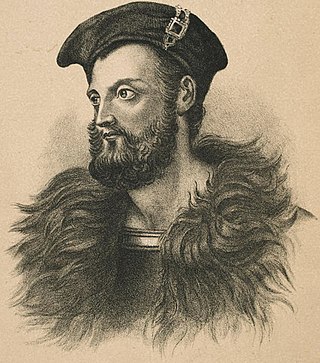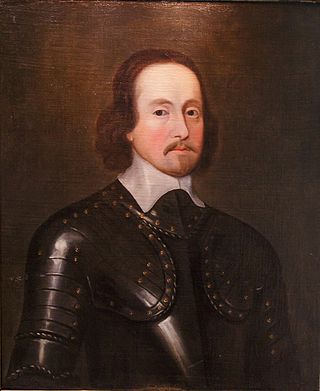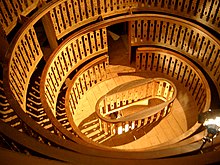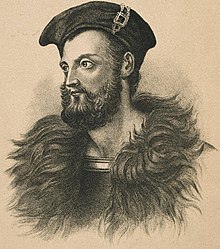
Owen Roe O'Neill was a Gaelic Irish soldier and one of the most famous of the O'Neill dynasty of Ulster. O'Neill left Ireland at a young age and spent most of his life as a mercenary in the Spanish Army serving against the Dutch in Flanders during the Eighty Years' War. After the Irish Rebellion of 1641, O'Neill returned and took command of the Irish Confederate Ulster Army. He is known for his victory at the Battle of Benburb in 1646.

James Tuchet, 3rd Earl of Castlehaven was the son of Mervyn Tuchet, 2nd Earl of Castlehaven and his first wife, Elizabeth Barnham. Castlehaven played a prominent role in the Wars of the Three Kingdoms that took place in the middle of the 17th century, and was particularly active in the conflicts in Ireland at this time.
Thomas Preston, 1st Viscount Tara was an Irish soldier of the 17th century. After lengthy service as a mercenary in the Spanish Army, Preston returned to Ireland following the outbreak of the Rebellion of 1641. He was appointed to command the Leinster Army of the Irish Confederacy, enjoying some success as well as a number of heavy defeats such as the Battle of Dungans Hill in 1647 where his army was largely destroyed. Like other Confederate leaders, Preston was a Catholic Royalist. He remained in close contact with the Lord Lieutenant the Marquess of Ormonde, and was a strong supporter of an alliance between Confederates and Royalists against the English Republicans.

The Irish Confederate Wars, also called the Eleven Years' War, took place in Ireland between 1641 and 1653. It was the Irish theatre of the Wars of the Three Kingdoms, a series of civil wars in the kingdoms of Ireland, England and Scotland – all ruled by Charles I. The conflict had political, religious and ethnic aspects and was fought over governance, land ownership, religious freedom and religious discrimination. The main issues were whether Irish Catholics or British Protestants held most political power and owned most of the land, and whether Ireland would be a self-governing kingdom under Charles I or subordinate to the parliament in England. It was the most destructive conflict in Irish history and caused 200,000–600,000 deaths from fighting as well as war-related famine and disease.

Sir Phelim Roe O'Neill of Kinard was an Irish politician and soldier who started the Irish rebellion in Ulster on 23 October 1641. He joined the Irish Catholic Confederation in 1642 and fought in the Wars of the Three Kingdoms under his cousin, Owen Roe O'Neill, in the Confederate Ulster Army. After the Cromwellian conquest of Ireland O’Neill went into hiding but was captured, tried and executed in 1653.

Confederate Ireland, also referred to as the Irish Catholic Confederation, was a period of Irish Catholic self-government between 1642 and 1652, during the Eleven Years' War. Formed by Catholic aristocrats, landed gentry, clergy and military leaders after the Irish Rebellion of 1641, the Confederates controlled up to two-thirds of Ireland from their base in Kilkenny; hence it is sometimes called the "Confederation of Kilkenny".
Hugh Dubh O'Neill, 5th Earl of Tyrone (1611–1660) was an Irish soldier of the 17th century. He is best known for his participation in the Irish Confederate Wars and in particular his defence of Clonmel in 1650.

The Battle of Scarrifholis, also spelt Scariffhollis was fought on 21 June 1650, near Letterkenny in County Donegal during the Cromwellian conquest of Ireland. A force loyal to the Commonwealth of England under Charles Coote defeated the Catholic Ulster Army, commanded by Heber MacMahon, Roman Catholic Bishop of Clogher.
Heber MacMahon was bishop of Clogher and general in Ulster. He was educated at the Irish college, Douay, and at Louvain, and ordained a Roman Catholic priest 1625. He became bishop of Clogher in 1643 and a leader among the confederate Catholics. As a general of the Ulster army, he fought Oliver Cromwell at the Battle of Scarrifholis in 1650. He was defeated, taken prisoner and executed the same year.
Events from the year 1650 in Ireland.

Charles Coote, 1st Earl of Mountrath was an Anglo-Irish soldier and politician from County Roscommon. A strong advocate of the Protestant Ascendancy in Ireland, he fought for Parliament and the Commonwealth in the 1641 to 1652 Irish Confederate Wars. Coote also sat as an MP, and held various senior administrative posts, including Lord President of Connaught.
The siege of Charlemont took place in July – 14 August 1650 during the Cromwellian conquest of Ireland when the fortress of Charlemont in County Armagh Ireland was besieged by Charles Coote's Parliamentarian army, which was largely composed of soldiers of the New Model Army. The force led by Coote eventually took the fort from its Irish defenders, but not before they suffered heavy losses, with some 500 Parliamentarian Soldiers being killed during assaults on the formidable stronghold. In terms of the number of soldiers killed in battle, the siege of Charlemont was the second bloodiest engagement fought by the Parliamentarians in Ireland, only surpassed by the siege of Clonmel.
Presented below is a chronology of the major events of the Irish Confederate Wars from 1641 to 1653. This conflict is also known as the Eleven Years War. The conflict began with the Irish Rebellion of 1641 and ended with the Cromwellian conquest of Ireland (1649–53).
Irish medical families were hereditary practitioners of professional medicine in Gaelic Ireland, between 1100 and 1700.
The Battle of Dungan's Hill took place in County Meath, in eastern Ireland on 8 August 1647. It was fought between the armies of Confederate Ireland and the English Parliament during the Irish Confederate Wars. The Irish army was intercepted on a march towards Dublin and destroyed. Although it is a little-known event, even in Ireland, the battle was very bloody and had important political repercussions. The Parliamentarian victory there destroyed the Confederate Leinster Army and contributed to the collapse of the Confederate cause and the Cromwellian conquest of Ireland in 1649.
Ó Siadhail / uaSiadhail / uaSiadgail is a Gaelic-Irish surname.

Richard Tyrrell was an Anglo-Irish Lord of Norman ancestry who commanded rebel Irish forces in the Irish Nine Years War, most notably at the Siege of Kinsale. He was considered one of Hugh O'Neill's most accomplished allies.

"The Lament for Owen Roe" is a traditional Irish ballad dating from the nineteenth century. With a mournful tune, based on an eighteenth-century composition called Lament for Owen Roe O'Neill by the harpist Turlough O'Carolan, it is a lament for the death of Owen Roe O'Neill. Its lyrics were written by Thomas Davis and draw on the tradition of romantic nationalism which was at its height during the era.

The Laggan Army, sometimes referred to as the Lagan Army, was a militia formed by Protestant settlers in the fertile Laggan district in the east of County Donegal in Ulster, during the time of the Irish Rebellion of 1641.

The Second Ormonde Peace was a peace treaty and alliance signed on 17 January 1649 between the Marquess of Ormonde, the leader of the Irish Royalists, and the Irish Confederates. It united a coalition of former Protestants and Catholics enemies from Ireland, Scotland and England – the three Kingdoms ruled by Charles I who was then held a prisoner by the Puritan Rump Parliament. His execution on 30 January drew together the signatories in allegiance to his young son Charles II.












